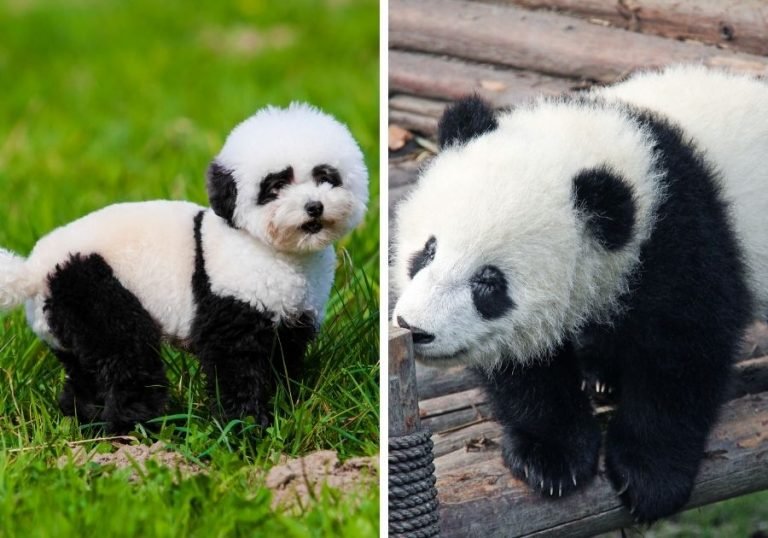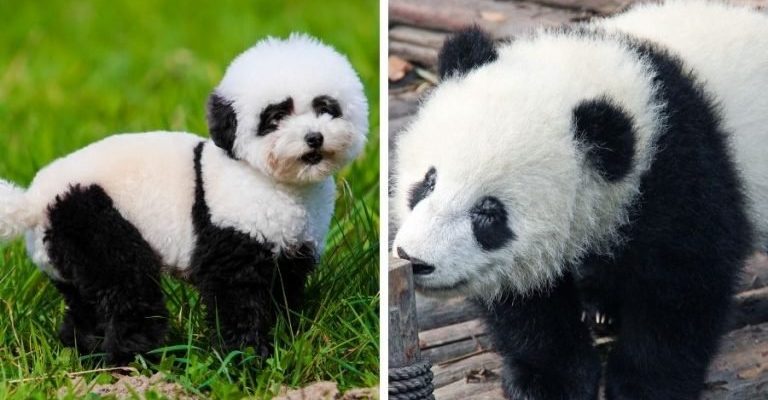
As we journey through this list, we’ll discover creatures that might surprise you. Some are from the same habitat, while others have similar colors or behaviors. By the end, you’ll have a better grasp of not just what makes each animal distinct, but also why these differences are so important in the grand tapestry of nature. So, grab a cup of coffee, and let’s chat about these fascinating animals.
1. Red Panda
When you think of animals similar to the panda, the red panda is likely the first that comes to mind. These small, tree-dwelling mammals are about the size of a domestic cat, covered in reddish-brown fur with striking white markings on their face. While they share a name with giant pandas, they belong to a different family altogether, called Ailuridae.
You might be wondering how to tell them apart. For starters, red pandas have a more fox-like face and a long, bushy tail, which they use for balance as they navigate through the treetops. Unlike their larger counterparts, they are primarily herbivores but will eat small animals and insects. Their diet mainly consists of bamboo, just like giant pandas, which gives them a similar niche in their ecosystem.
Their habitat differs slightly as they prefer temperate forests in the Himalayas and southwestern China, whereas giant pandas mainly roam the mountainous regions of central China. This makes the red panda a unique character in its own right!
2. Asiatic Black Bear
Next on the list is the Asiatic black bear, also known as the moon bear due to the distinctive white crescent shape on its chest. Similar in size and robust build to the panda, these bears boast thick black fur and a round face that may remind you of a panda’s adorable features.
Now, here’s the kicker: while giant pandas are primarily bamboo eaters, Asiatic black bears are omnivorous. They enjoy everything from fruits and nuts to insects and small mammals! This flexibility in their diet allows them to thrive in various environments, from the forests of Southeast Asia to the mountainous regions of India.
When spotting them in the wild, look for the Asiatic black bear’s long claws, which they use for climbing trees, unlike the panda’s shorter, sturdier claws adapted for eating bamboo. So, while they may look similar at a glance, their lifestyles and habits are quite different.
3. Spectacled Bear
The spectacled bear, native to South America, is another relative of the panda. Often dubbed the Andean bear, they sport a coat that can be black, brown, or even a mix, with light markings around their eyes that resemble spectacles. This bear’s look can sometimes bring young pandas to mind.
These bears primarily reside in the Andes mountains and are skilled climbers, just like their panda cousins. However, unlike giant pandas, the spectacled bear has a varied diet that includes fruits, plants, and small mammals. Their diet changes with the seasons; during bear essentials like summer, they might feast on juicy berries, while in winter, they’ll rely more on roots and bark.
What’s fascinating about the spectacled bear is their solitary nature. They tend to live alone, unlike giant pandas that can be more social during mating seasons. So, while they share a common ancestor, their life habits take them down different paths.
4. Giant Anteater
Now, stepping away from bears for a moment, the giant anteater might seem an unusual entry in our list. But if you look closely, you’ll notice similar black-and-white markings. With their long snouts and bushy tails, they have an endearing, almost plush appearance that can remind you of a panda’s cuteness.
You might be wondering how they stack up against the adorable bear. While giant pandas prefer a vegetarian diet, feasting on bamboo, giant anteaters are insectivores. They primarily consume ants and termites, using their elongated snouts to forage in nests.
Their populations are found across Central and South America in grasslands and forests, showcasing a different habitat compared to the bamboo forests favored by pandas. Despite their differences, both animals hold a special place in their respective ecosystems.
5. Kermode Bear
The Kermode bear, also known as the spirit bear, is fascinating. Found primarily in British Columbia, Canada, these bears are a color variant of the American black bear. While most are black, some have stunning creamy white fur that can remind you of a panda’s appearance.
Although they might look cute and cuddly, Kermode bears are just as robust as their black bear relatives. Their diet is similar—berries, fish, and vegetation—and they typically roam the forests near rivers. The main difference? Kermode bears hold significant cultural importance for Indigenous peoples, representing harmony and balance.
By observing a Kermode bear, you might be reminded of a panda. However, the Kermode’s social behaviors and habitats vary greatly, showcasing the rich diversity within the bear family tree.
6. Malayan Sun Bear
Meet the Malayan sun bear, often regarded as the smallest bear species. These bears have a striking appearance with short, sleek black fur and a light orange-brown patch on their chest, resembling the panda’s dark and light color scheme.
Despite the visual similarities, sun bears are very different in behavior. They are known for their impressive climbing abilities and tend to spend a lot of time in trees. Their diet is entirely different as well, focusing on fruits, honey, and insects, as opposed to the strict bamboo diet of pandas.
You’ll often find sun bears in the tropical forests of Southeast Asia, where they thrive in their specific ecological niche. Their playful and inquisitive nature makes them a joy to watch, even if they aren’t as cuddly as pandas.
7. Lowe’s Lemur
Now, let’s hop over to the world of primates! The Lowe’s lemur, also known as the black-and-white ruffed lemur, sports a striking coat that closely resembles that of a panda. With its bold black and white pattern, it can easily confuse those familiar with its bear counterparts.
However, these lemurs are entirely different in lifestyle. They are native to Madagascar and spend their lives in trees, socializing in groups. Their diet consists mainly of fruit, although they might munch on leaves and flowers as well.
Though not directly related to pandas, the adaptation of their colors serves a similar purpose: camouflage in the dappled sunlight filtering through the forest canopy. Their agility and social behaviors contrast sharply with the solitary existence of the giant panda.
8. African Penguin
Surprisingly, the African penguin is another animal you might think of when considering creatures that look like pandas. With their black-and-white plumage, these adorable birds have a striking resemblance to giant pandas’ color scheme.
Unlike pandas, though, African penguins are flightless birds that thrive in coastal habitats. They primarily feed on fish and squid, using their excellent swimming skills to catch their meals. While they may not be bears, they share a playful nature that can’t help but remind you of pandas.
Interestingly, African penguins also have a unique vocalization that can sound like a braying donkey! This cheeky characteristic adds another layer to their personality, making them special in the animal kingdom.
9. Pika
You might not have heard of a pika, but these little mammals share a similar fluffy appearance with pandas. Found in mountainous regions across North America and Asia, pikas have round bodies covered in soft fur, and their small size and shape can be reminiscent of the panda’s cubs.
Though they may look cute and cuddly, pikas are herbivores, primarily feeding on grasses and shrubs. They are known to gather and store food for the winter, showcasing an interesting survival tactic that sets them apart from pandas.
While they inhabit different environments—pandas in bamboo forests and pikas in rocky slopes—their roles in the ecosystem highlight the diversity of adaptations among different species.
10. Eurasian Brown Bear
Last but not least, we have the Eurasian brown bear. These bears can have a similar size and build to giant pandas, especially the more robust individuals. Though they come in various shades, some can appear quite dark, which might remind you of a panda at first glance.
Eurasian brown bears are omnivorous, having a varied diet that includes plants, fruits, and small animals. Unlike giant pandas, who focus on bamboo, brown bears are adaptable and can thrive in various habitats, including forests, mountains, and even tundra.
While they share some traits with pandas, their behavior is more seasonal, often becoming more active during certain times of the year when food is plentiful. Observing their natural behaviors can provide valuable insights into the differences between these two intriguing species.
In conclusion, while pandas hold a special place in our hearts with their unique charm and conservation symbolism, the animal kingdom is full of fascinating creatures that share similarities with them. Each of these animals has its own story and character, reminding us of the diversity and richness of life on our planet. Whether it’s their appearance, habitat, or behaviors, recognizing these differences only enhances our appreciation for wildlife and the delicate ecosystems we share.

